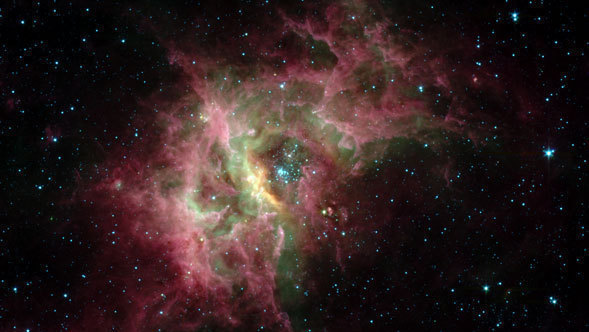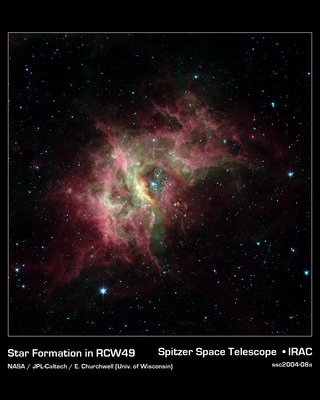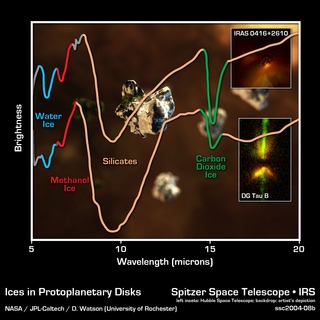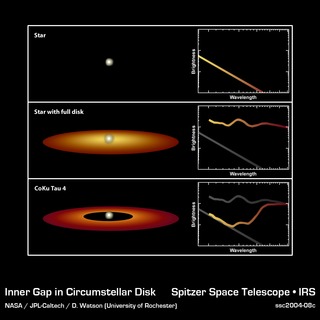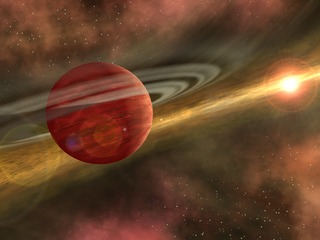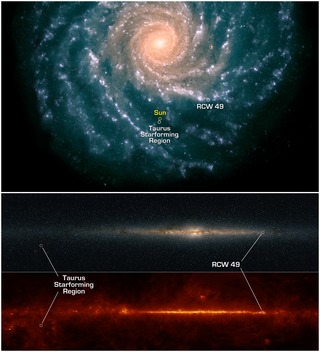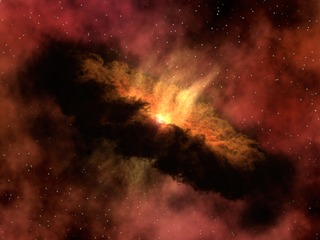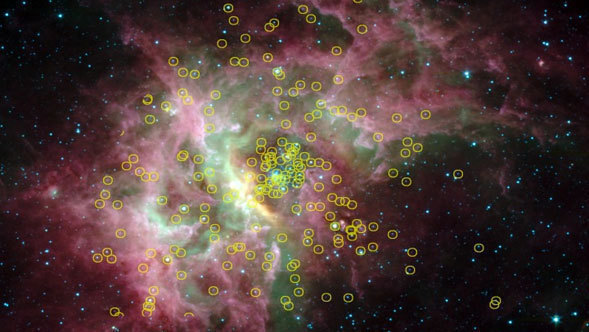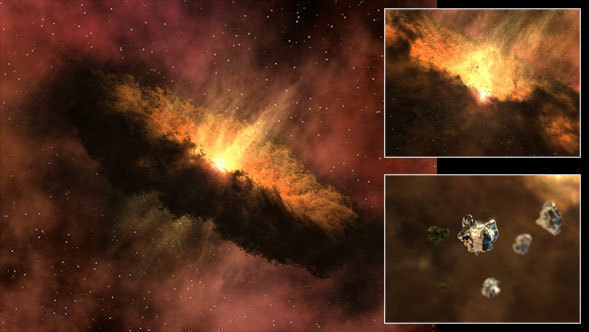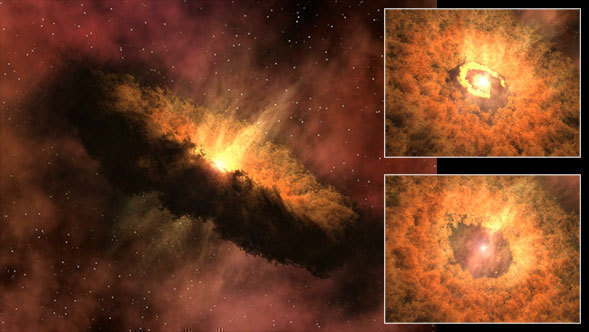Icy Organics in Planet-Forming Disks
Science Animations Video • May 27th, 2004 • ssc2004-08v2
Using the Spitzer Space Telescope, astronomers are probing the chemistry of circumstellar disks, the dusty disks that surround stars, to understand the first moments in planetary life. Spitzer has turned its ultra-sensitive infrared spectrograph instrument toward five young stars in the constellation Taurus. These stars are still surrounded by thick, dusty disks -- relics of the gravitational collapse that formed them only a few million years ago. The five disks have similar chemistry, indicating dusty material rich in silicates and organic compounds, as well as both water and carbon dioxide ices. Despite their similarities, there are also intriguing differences between the disks that may hold important clues about the evolution of stars and their young planetary systems.
In this animation, we focus on the disk of a young star. Light from the star is almost completely blocked by the thick dust and is seen only when it scatters off dust and gas above the disk plane. Delving in closer, we observe that the disk is composed of countless tiny grains of dust, some of which, according to Spitzer observations, have crystal structures. These dust grains may serve as the first building blocks of new planets, accreting into larger and larger bodies, as time progresses.
As a few of these crystals fill our view, a strange metamorphosis takes place. Ice, already known to be present in these disks, begins to condense onto the surface of the crystals. Over time, the grains become larger, icier and more spherical. These chemical and physical changes in the dust grains may explain the differing spectral characteristics of the disks, and may also serve as a marker of the age and evolutionary stage of protoplanetary, or planet-forming, disks.
Video Credit: NASA/JPL-Caltech/R. Hurt (SSC/Caltech)
